Fidelity Bank, East Durham, 1920s. Note the streetcar tracks making the curve from Angier Ave to S. Driver St.
(Courtesy Duke Rare Book and Manuscript Collection)
The Fidelity Bank (as I recently learned, that was pronounced Fie-delity,) first established by Washington Duke, Benjamin Duke, MA Angier, and George Watts in 1887, and later the anchor tenant in the Geer Building, expanded with its first two branches in the early 1920s - a West Durham branch and an East Durham Branch. Both branches were neoclassical in design, and similar in massing, although different form and materials were used in each. The Historic Inventory states that Durham architects Rose and Rose designed both branches. As the East Durham branch clearly notes, it was built in 1921.
The East Durham branch, however, was not originally a Fidelity branch, but the new location of the People's Bank (as you can see on the facade above,) which, prior to 1921, had been located at 463 South Driver St. - the corner of South Driver and the NC railroad tracks. I am unsure as to when it was acquired by Fidelity, although it was the People's Bank in 1923.
Fidelity Bank and the remainder of the 300 block of South Driver, 1945
(Courtesy Durham County Library / North Carolina Collection)
In 1956, Wachovia Bank of Winston-Salem acquired and absorbed Fidelity. While the West Durham branch became a Wachovia, the bank constructed a new 'modern' branch in East Durham, complete with drive-thru, one block to the east on Angier Avenue and South Guthrie.
The former bank branch would go through a series of tenants in the ensuing years. Consolidated Insurance Company made its home there in the 1960s; the Knight Electric Company by the 1970s.
Former East Durham Fidelity branch, 1980
This is one of my favorite buildings in Durham - how I wish it would find its way back to a retail adaptive reuse that maximized the effect of the beautiful architecture.
Fidelity Bank branch and the remainder of the 300 block of South Driver, March 2007
10.02.10 (stupid pole...)
[Update May 2023] Write-Up from Preservation Durham Home Tour: "Then & Now: Part II"
Anchoring the northwest corner of Angier Avenue and South Driver Street in the East Durham National Register Historic District is the magnificent 1921 People’s Bank, a Local Historic Landmark that embodies Durham’s remarkable story of growth, decline, and renewal. Built the same year at the eastern and western ends of the Durham Traction Company’s streetcar network are two clearly related bank buildings, the East and West Durham branches of the Fidelity Trust Company and Savings Bank. Fidelity was Durham’s third financial institution, formed in 1887 by Ben Duke, Malbourne Angier, Julian S. Carr, J. W. Blackwell, George W. Watts, and several others, and was headquartered in the Geer Building at the NE corner of West Main and Corcoran Streets.
Fidelity hired prolific Durham architect Garland W. Rose to design both branch banks in the Neoclassical Revival style, as he had done for Mechanics and Farmers on Parrish Street. Rose had been a draftsman for, and then business partner of, architect Hill Linthicum, whose firm was responsible for Duke’s ornately corbeled brick tobacco warehouses. Both architects’ offices were located in the Trust Building at West Main and Market Streets, Rose and Rose on the 4th floor, Linthicum on the 5th. At Ninth and Perry, across from Erwin’s large mill pond where the streetcars circled back towards Broad Street, Rose designed a stately two-story structure with a flat roof, distinctive buff colored brick with limestone accents and massive two-story arched windows. At Angier and Driver, shaping up as the center of East Durham’s growing business district, Rose designed a splendid building of common brick with smaller arched windows facing Angier Avenue and an all limestone “temple-style” front façade incorporating four massive Corinthian columns supporting a triangular limestone pediment. Both buildings had a ground-floor banking hall with a mezzanine above so the manager could keep an eye on things. The East Durham Branch would continue to be known as People’s Bank until the mid-1930’s when it took on the Fidelity brand. The two bank buildings served the textile communities of East and West Durham. Ben Duke was the principal in these enterprises just as he owned the banks that served them.
As the textile industry and the southern manufacturing economy waned, and the Durham Cotton Manufacturing Company at the south end of Driver was shuttered, the East Durham commercial district began a slow but steady decline. In 1955, Fidelity Bank was acquired by Winston-Salem based Wachovia, who kept and expanded the West Durham branch (now Bruegger’s Bagels) but decided to build a modern East Durham branch with a drive-thru a block east at Angier and Salem. Garland Rose’s imposing People’s Bank became an Insurance and Realty Company, then the home of Knight Electric Contractors, then the East Durham Jewelry and Pawn, then Love Divine Ministry Inc., a storefront church.
In early 2019 the building was acquired by two professional designers returning home to North Carolina after years on the west coast. Seeking a venue for their multi-disciplinary interiors and landscape design firm, they were disappointed in the suburban nature and lack of architectural character in the commercial spaces on the market. When the bank building became available at the end of 2018, they immediately saw its potential and bought it.
Over several months the new owners peeled away carpeting, drop ceilings, and acoustical tile, exposing the bank’s original mosaic tile, heart pine floors, and 18’ lobby ceilings. Wrought iron security bars dating to the pawn shop era were removed from the original arched wooden windows. Multiple generations of plywood signs above the front entrance were stripped, exposing a portion of the original wood storefront that had been hidden for six decades. The mezzanine, long closed off from the first floor, was re-opened and repurposed as workspace overlooking the retail floor below. Walls and floors were repaired and repainted and electrical systems were made safe.
Now known as Design Bank, the building’s grand lobby is once again open to the public. The owners hope eventually to remove the non-original glass block on the front façade and restore a storefront with a better connection to resurging South Driver Street. We applaud their vision and stewardship of this Durham Historic Landmark, and thank them for sharing it with us on this year’s tour.

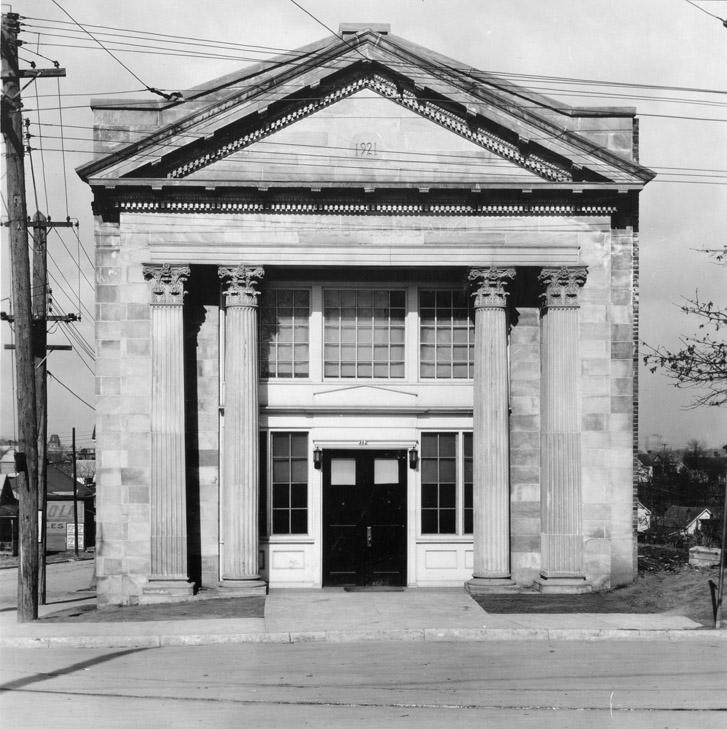
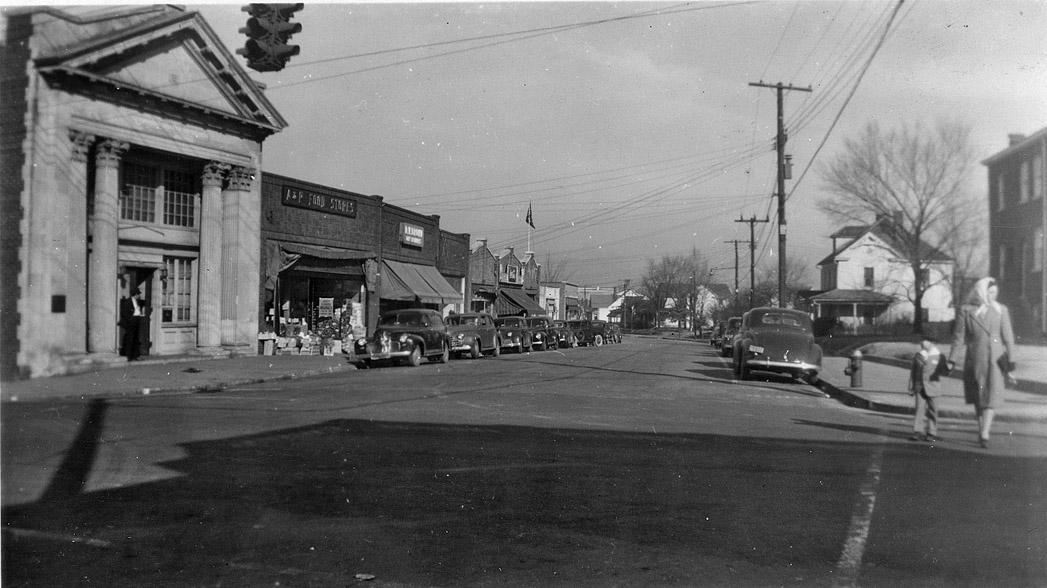
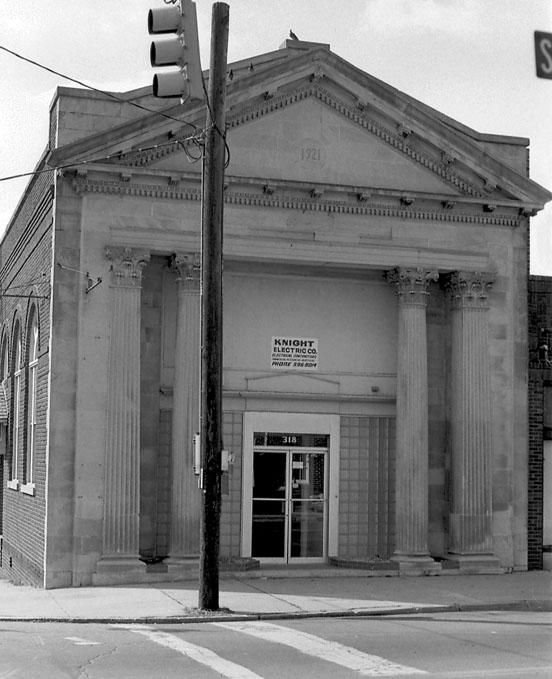
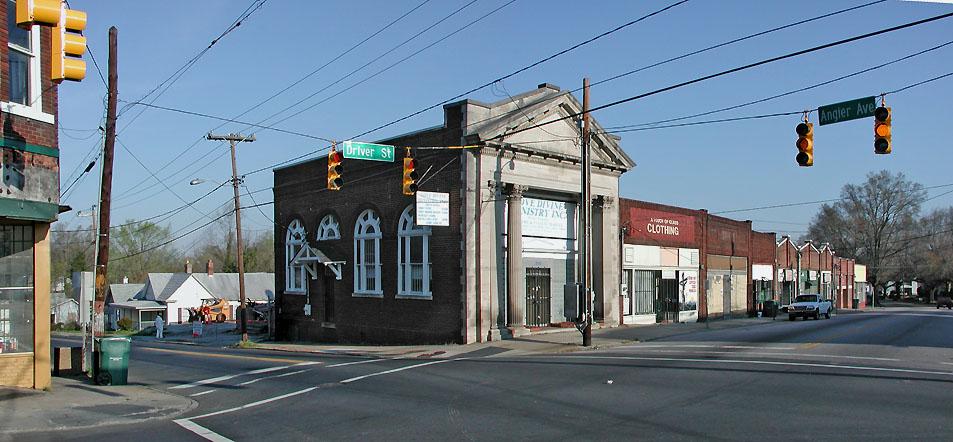
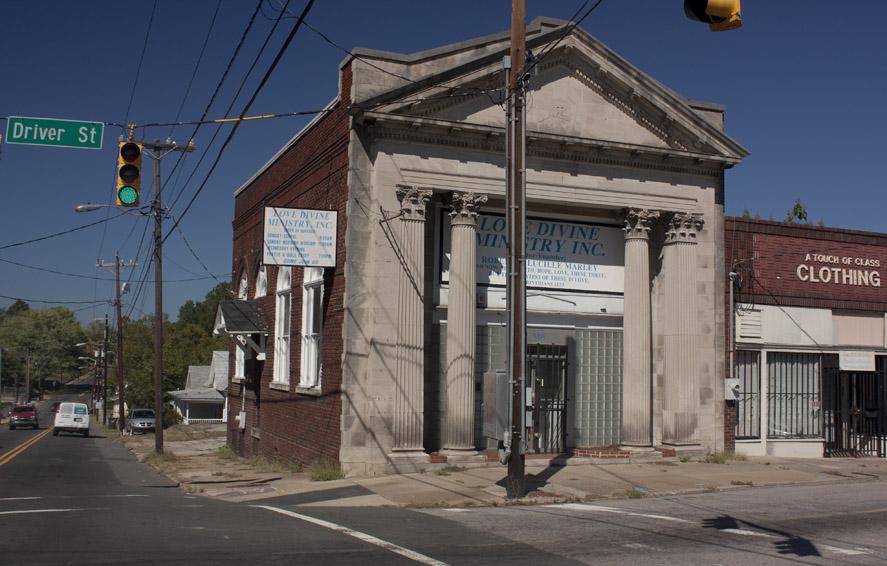
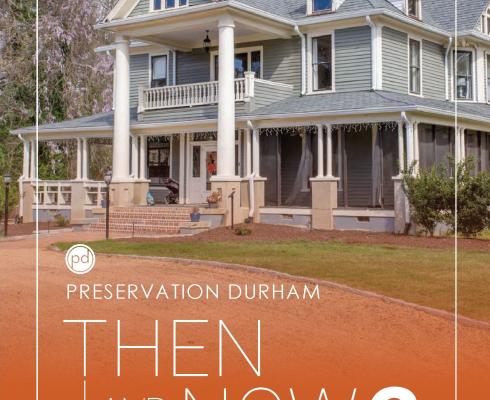
Comments
Submitted by David Jeffreys (not verified) on Mon, 4/18/2011 - 12:21pm
Hey this is the 21st century; put those utilities underground. Such unsightly poles and wires everywhere. Then when hurricanes and tornadoes come along as they often do, no more live wires on the ground and power outages. Cities should require that all Duke Energy, Progress Energy, and cable company lines be put underground -- not only for new construction, but updated current infrastructure as well
Submitted by Ottis (not verified) on Mon, 4/18/2011 - 12:21pm
Sadly, with tenants such as "Love Divine Ministry" and "A Touch of Class Clothing", I don't see the condition of these buildings improving anytime in the near future.
Submitted by Michael Bacon (not verified) on Mon, 4/18/2011 - 12:21pm
Don't worry, Gary, by the time it's time to do anything with this building, I'm sure we'll have buried the power lines... I mean, I assume that's about to happen any minute now.
Submitted by Dr. Robert C… (not verified) on Tue, 11/29/2011 - 3:07pm
This building was owned by my father Cecil Crawford from about 1958-1966. It was his office and headquarters for several of his enterprises. I remember going there at night as a student at Duke to use one of the "new" electric typewriters. It is my recollection that he bought it from the bank.
Dr. Robert Cecil Crawford Jr.
Add new comment
Log in or register to post comments.